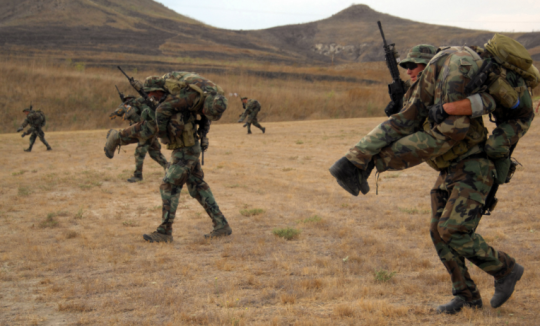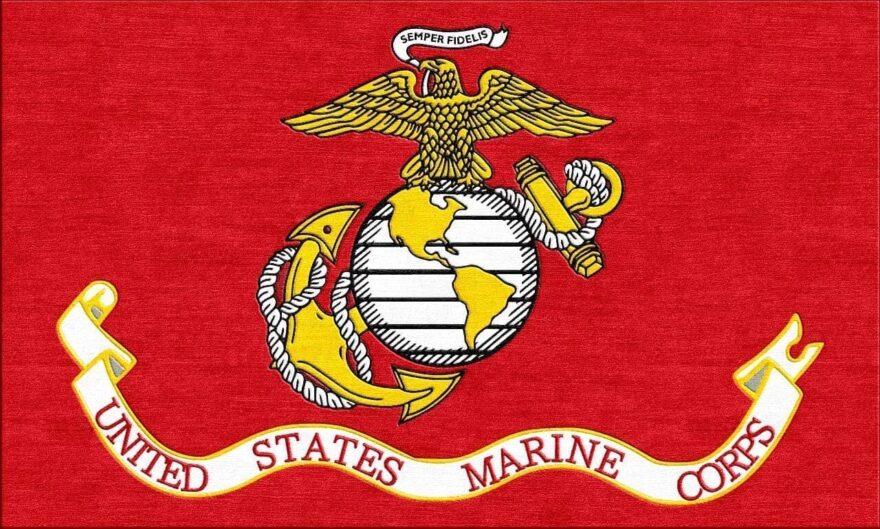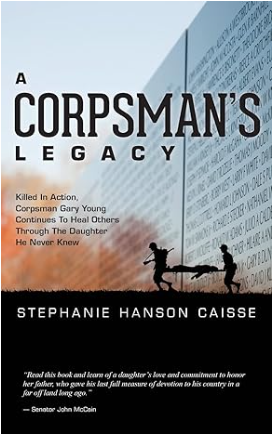San Diego Union-Tribune Online, Sept. 27 | Jeanette Steele
As SEAL leader recommends opening to women, former SEALs discuss issues facing elite branch
In the Navy SEAL world, “standards” is the word of the hour.

As momentum builds for the elite Navy branch to open its doors to women, former SEALs are concerned there will be pressure to subtly change the training process that molded them — even as some agree that the time has come for gender equality.
On Friday, news broke that Rear Adm. Brian Losey, commander of the Coronado-based SEALs, has recommended that the elite branch open to women.
The top SEAL wrote that there are “no insurmountable obstacles” to integrating women.
But, he added, they may be more prone to injuries and probably won’t enhance the fighting effectiveness of SEAL teams, according to a memo obtained by The Associated Press.
Losey’s memo was to the head of the U.S. Special Operations Command, Gen. Joseph Votel, who is expected to soon make his own recommendation about admitting women to the special-operations brotherhood, which includes Army Rangers and Green Berets.
All of this is precursor to an upcoming decision by Defense Secretary Ashton Carter about whether any part of the U.S. military will remain closed to women.
Losey’s leaked recommendation is particularly noteworthy because it differs from the Marine Corps, whose then-commandant recently asked to continue excluding women from some direct-combat jobs.
Former SEALs point to various possible pitfalls ahead — all related to what they predict will be an inherent pressure to see a woman pass SEAL training.
Ed Hiner was training officer at the Coronado Naval Special Warfare Command before retiring in 2012.
He said SEALs probably won’t touch the written standards, such as timed swims and runs throughout basic training conducted in Coronado.
That training is a 21-week ordeal known as Basic Underwater Demolition/SEAL, or BUD/S. At least 70 percent of the men who try out fail.
It’s the stuff not on paper that might yield to pressure, said Hiner, who lives in La Jolla.
For instance, BUD/S candidates run a mile each way to meals. That’s six miles a day that aren’t part of the official standard.
He said SEAL leaders might be coaxed into cutting those runs to lessen stress fractures among women, for example.
“Those type of in between the standards, as I call it, those type of things have been such a part of training for so long … those things are part of what has produced probably the best fighting force in the world,” Hiner said. “At the end of the grinding process, we came out with what we wanted. If you undo the grinding, it’s not going to be the same training — not even close to the same.”
If there’s a perception that the rigor has lessened, the SEALs will no longer attract the best of the best, he added.
Another former SEAL, Brandon Webb, said he hopes there won’t be spoken or unspoken quotas to fill.
He pointed to missteps when women first became Navy fighter pilots in the 1990s.
Famously, Lt. Kara Hultgreen fatally crashed her F-14 Tomcat while trying to land on the aircraft carrier Lincoln in 1994. Later, an inspector general probe determined that the Navy botched the initial placement of female combat pilots aboard the carrier.
The investigation found that women weren’t given preferential treatment. However, it concluded that instructors didn’t give the female pilots the help they deserved and that enormous media attention on the issue stigmatized the women and made it hard for them to be accepted in squadrons.
The report admonished the Navy not to “accelerate” the training of female aviators but to put them in the fleet after adequate and complete instruction.
Webb, who served from 1993 to 2006, said he hope the SEALs learn from aviation’s mistakes.
“Lives were lost as a result of ‘push through,’” Webb said. “This ultimately defeats unit morale, gets people killed and diminishes the accomplishment of those women who actually meet the standard.”
Losey, the Naval Special Warfare boss, addressed this issue in his memo, acknowledging there may be “external” pressure.
“With the recent female graduates from the Ranger course, there may be an expectation that there will soon be female graduates from BUD/S,” he wrote. “We will welcome any candidate who meets standards.”
Despite their concerns, both former SEALs said it’s right for women to get a shot.
Hiner said that he has personal reservations, which he admits are based in notions such as chivalry. But, he added, “Intellectually, as a leader who says ‘let’s be fair to every human being in this society,’ we have to open it up.”
Webb said women have earned the chance to try.
This echoes Losey’s memo, which noted that about 500 women already serve alongside SEALs in support jobs. They have been deploying with units for more than a decade, in wars where the “frontline” is blurred by guerilla-style fighting.
“We live in the 21st century where women have proven they can compete on the same level as men,” Webb said.
Still, in the tight-knit circles of former SEALs, people said the chief emotion in the active-duty ranks is dread.
That mirrors a recent RAND Corp. survey of special-operations troops that reflected doubts about whether women could meet the overall job demands. It also found concerns that sexual harassment or assault could increase, and cited worries about “unequal treatment” of special-operations candidates and personnel.
SEAL teams are known to be a rough-and-tumble environment full of high-octane personalities. One retired SEAL officer said heated arguments and even fistfights occur. Will SEALs feel compelled to treat women with a lighter touch, he wondered?
Losey addressed some of these issues in his five-page memo, which has not been released publicly.
He downplayed the risk of women wrecking team cohesion, saying that while some may not want women serving alongside them, “acceptance is expected to increase over time.”
The Coronado SEAL command has spent the past year examining its standards.
Currently, just to enter BUD/S, candidates must be able to do 10 pull-ups in two minutes and 50 push-ups in the same amount of time, among other swimming and running tests.
The people who survive training usually score well above the minimum, according to people familiar with the process.
In addition, the SEAL command looked at how both genders might be accommodated in regards to living conditions and how women might be incorporated into training command staffs.
Unlike the Marine Corps — which released the results of its study earlier this month — the SEALs have done this quietly, without sharing their conclusions.
Until now.
In his memo, Losey said officials expect higher injury rates for women during training. He called for more education and study on the issue, according to the Associated Press.

 Our legacy lives through the stories we tell. The Suck Life wants yours! Make Chesty proud!
Our legacy lives through the stories we tell. The Suck Life wants yours! Make Chesty proud!



 Semper Fidelis
Semper Fidelis


95% of tip top in shape men don’t make it through that training. No woman stands a chance in hell of being a SEAL, unless they drastically lower the standards.